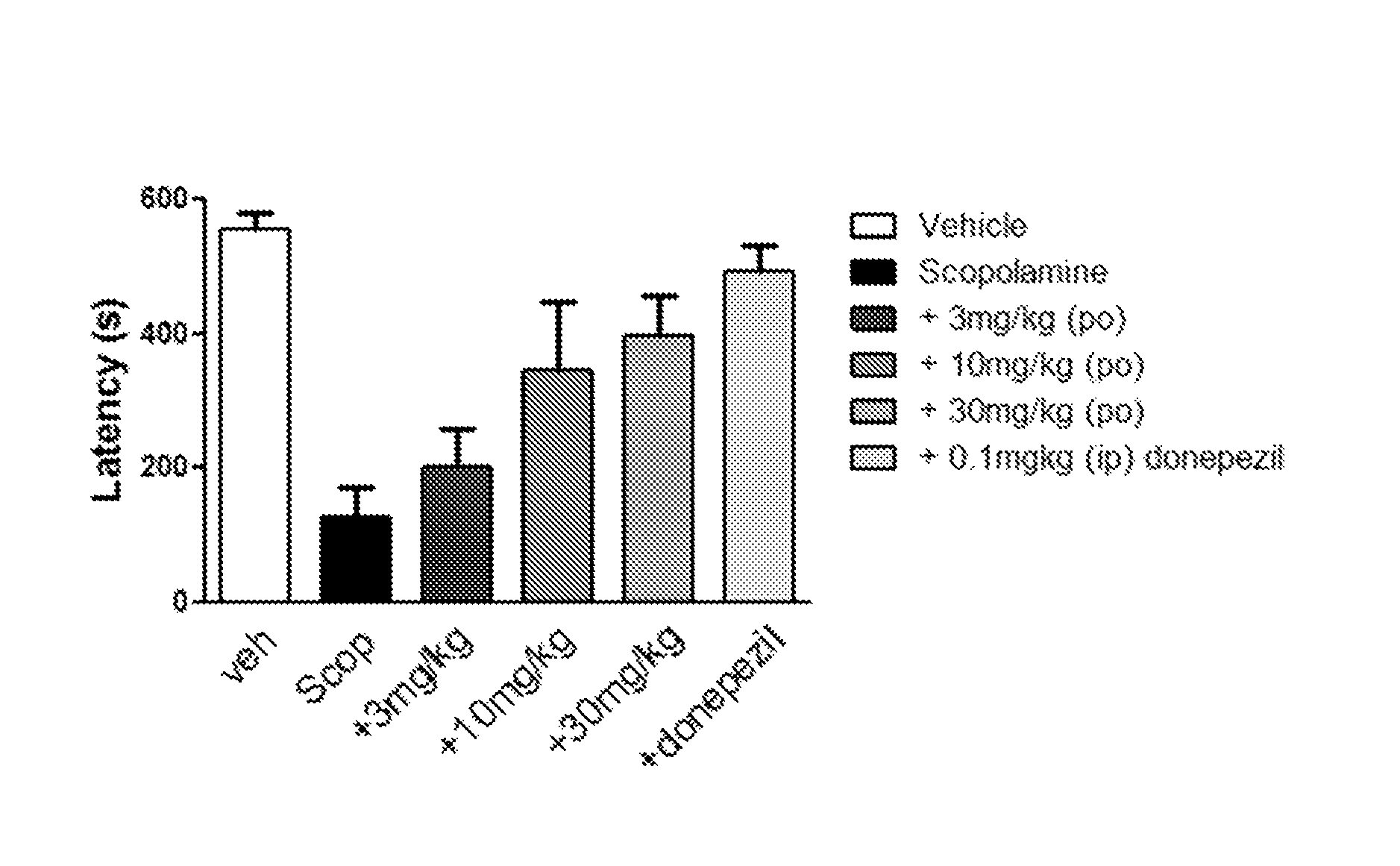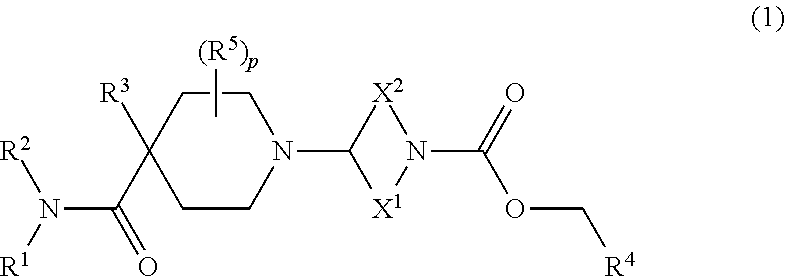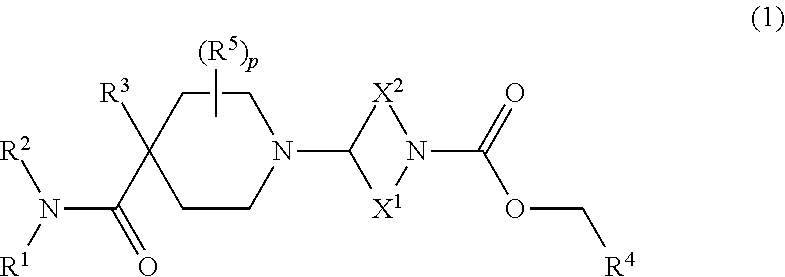Bicyclic AZA compounds as muscarinic M1 receptor agonists
a technology of muscarinic m1 receptor and bicyclic aza, which is applied in the direction of heterocyclic compound introduction, organic active ingredients, nervous disorders, etc., can solve the problems of symptomatic cognitive decline, rise to dose-limiting side effects, and cognitive deficits that are difficult to detect and treat, so as to reduce scopolamine-induced amnesia
- Summary
- Abstract
- Description
- Claims
- Application Information
AI Technical Summary
Benefits of technology
Problems solved by technology
Method used
Image
Examples
examples 1 to 32
[0248]The compounds of Examples 1 to 32 shown in Table 1 below have been prepared. Their NMR and LCMS properties and the methods used to prepare them are set out in Table 3. The starting materials for each of the Examples are listed in Table 2.
[0249]
TABLE 1
General Procedures
[0250]Where no preparative routes are included, the relevant intermediate is commercially available. Commercial reagents were utilized without further purification. Room temperature (rt) refers to approximately 20-27° C. 1H NMR spectra were recorded at 400 MHz on either a Bruker or Jeol instrument. Chemical shift values are expressed in parts per million (ppm), i.e. (δ)-values. The following abbreviations are used for the multiplicity of the NMR signals: s=singlet, br=broad, d=doublet, t=triplet, q=quartet, quint=quintet, td=triplet of doublets, tt=triplet of triplets, qd=quartet of doublets, ddd=doublet of doublet of doublets, ddt=doublet of doublet of triplets, m=multiplet. Coupling constants are listed as J va...
example a
Phospho-ERK1 / 2 Assays
[0379]Functional assays were performed using the Alphascreen Surefire phospho-ERK1 / 2 assay (Crouch & Osmond, Comb. Chem. High Throughput Screen, 2008). ERK1 / 2 phosphorylation is a downstream consequence of both Gq / 11 and Gi / o protein coupled receptor activation, making it highly suitable for the assessment of M1, M3 (Gq / 11 coupled) and M2, M4 receptors (Gi / o coupled), rather than using different assay formats for different receptor subtypes. CHO cells stably expressing the human muscarinic M1, M2, M3 or M4 receptor were plated (25K / well) onto 96-well tissue culture plates in MEM-alpha+10% dialysed FBS. Once adhered, cells were serum-starved overnight. Agonist stimulation was performed by the addition of 5 μL agonist to the cells for 5 min (37° C.). Media was removed and 50 μL of lysis buffer added. After 15 min, a 4 μL sample was transferred to 384-well plate and 7 μL of detection mixture added. Plates were incubated for 2 h with gentle agitation in the dark and...
example b
Passive Avoidance
[0383]Studies were carried out as described previously by Foley et al., (2004) Neuropsychopharmacology. In the passive avoidance task scopolamine administration (1 mg / kg, i.p.) at 6 hours following training rendered animals amnesic of the paradigm. A dose range of 3, 10, and 30 mg / kg (po) free base, administered 90 minutes prior to the training period via oral gavage, was examined.
[0384]Example 9 Isomer 2 was found to reverse scopolamine-induced amnesia of the paradigm in a dose-dependent manner, with an approximate ED50 of ca. 10 mg / kg (po). The effect of 30 mg / kg was similar to that produced by the cholinesterase inhibitor donepezil (0.1 mg / kg, ip) which served as a positive control (FIG. 1).
PUM
| Property | Measurement | Unit |
|---|---|---|
| temperature | aaaaa | aaaaa |
| temperature | aaaaa | aaaaa |
| temperature | aaaaa | aaaaa |
Abstract
Description
Claims
Application Information
 Login to View More
Login to View More - R&D
- Intellectual Property
- Life Sciences
- Materials
- Tech Scout
- Unparalleled Data Quality
- Higher Quality Content
- 60% Fewer Hallucinations
Browse by: Latest US Patents, China's latest patents, Technical Efficacy Thesaurus, Application Domain, Technology Topic, Popular Technical Reports.
© 2025 PatSnap. All rights reserved.Legal|Privacy policy|Modern Slavery Act Transparency Statement|Sitemap|About US| Contact US: help@patsnap.com



